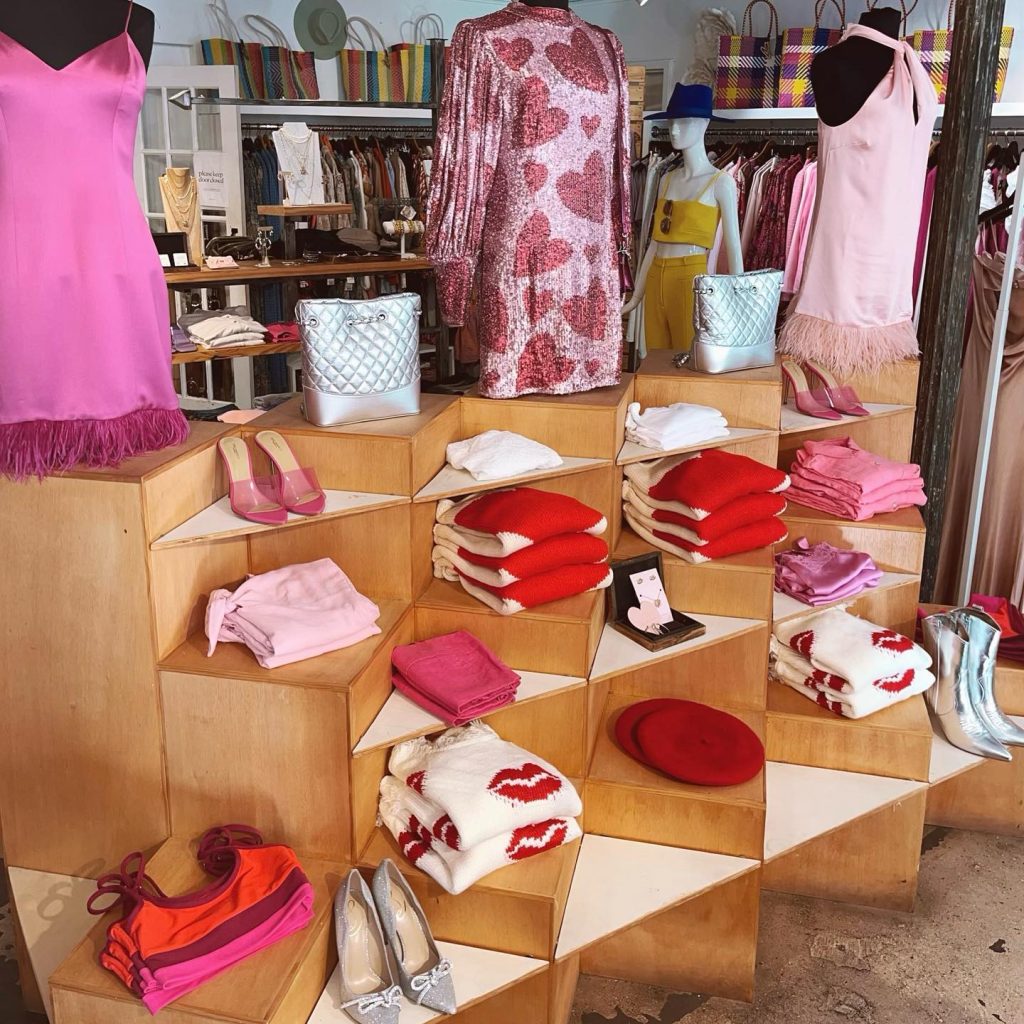Elevate Your Wardrobe with Spectacular Boutique Fashion Fundamentals
Elevate Your Wardrobe with Spectacular Boutique Fashion Fundamentals
Blog Article
Lasting Fashion: Just How Eco-Friendly Clothing Is Shaping the Future of Style
As the apparel industry deals with enhancing analysis over its ecological influence, the surge of lasting style uses a promising alternative that lines up style with environmental duty. Using cutting-edge products such as plant-based textiles and recycled fibers, along with innovative approaches like digital and 3D printing, designers are redefining what it implies to be stylish in the contemporary age. Concurrently, the growing popularity of upcycling and thrift society is cultivating a change in the direction of a round economic situation. Exactly how does this movement truly influence the future trajectory of style, and what obstacles lie ahead in its widespread fostering?
Innovative Lasting Materials
As the style industry grapples with its ecological influence, innovative lasting materials have actually arised as a crucial option for reducing environmental impacts. These products not just reduce reliance on fossil gas yet also reduce dangerous chemical usage and water consumption.
In enhancement to plant-based products, improvements in biofabrication have actually brought about the growth of lab-grown fabrics. Mycelium natural leather, originated from mushroom origins, offers a versatile and biodegradable choice to pet natural leather. Its manufacturing leads to significantly lower carbon discharges and water use, making it a more sustainable option for stylist looking for to line up with green practices.
Recycled products are additionally gaining grip, with polyester made from recycled plastic containers standing for a considerable development. This advancement not only diverts plastic waste from landfills and seas but additionally minimizes energy consumption contrasted to creating virgin polyester. Together, these products highlight the capacity for an extra lasting fashion business, leading the way for environmentally aware style and production.
Eco-Conscious Production
Structure on the technologies in sustainable materials, the apparel industry is likewise re-evaluating its manufacturing procedures to additionally reduce ecological effect. Key strategies consist of lessening water usage, decreasing carbon emissions, and eliminating unsafe chemicals. By taking on closed-loop systems, makers aim to recycle water and power efficiently, considerably lessening waste. The combination of renewable resource sources, such as solar and wind power, right into production centers further cuts reliance on nonrenewable fuel sources.
One more essential element is the reduction of poisonous chemicals commonly utilized in coloring and completing textiles. Eco-conscious manufacturers are shifting in the direction of plant-based dyes and waterless dyeing technologies, which not just safeguard local environments but likewise enhance employee safety and security. Innovations like digital printing decrease material waste and energy usage, using a cleaner choice to typical methods.
Moreover, transparency and traceability have become critical. With the improvement of blockchain innovation, business can currently supply in-depth understandings into their supply chains, guaranteeing honest and eco-friendly methods at each action. This transparency builds customer count on and encourages brands to maintain high sustainability criteria. As the need for eco-conscious items grows, makers are obliged to innovate, ensuring that the future of style is both lasting and stylish.
The Surge of Upcycling
Upcycling, a transformative method in sustainable style, involves artistically repurposing discarded products into brand-new, top notch products. This cutting-edge method not just decreases waste yet likewise lessens the demand for basic materials, thus decreasing the environmental influence of clothes manufacturing. By reimagining and reconstructing existing items, developers and fashion brand names are able to infuse originality right into their collections while advertising environmental duty.

Moreover, the upcycling activity has actually equipped local business and independent developers, who usually lead in technology because of their agility and creative thinking. By maximizing the plentiful accessibility of extra products, these entities add to a round economic climate, demonstrating that style can be both elegant and sustainable. Through upcycling, the sector takes significant strides in the direction of a much more conscious and liable future.
Thrift Society's Effect
The burgeoning second hand culture substantially reshapes the landscape of lasting fashion, stressing the significance of conscious consumption. This social shift motivates customers to welcome pre-owned garments, thereby lowering the demand for brand-new garment manufacturing and reducing ecological influence. Second hand shopping not only expands the lifecycle of clothes yet also reduces the carbon impact related to production, carrying, and dealing with clothing.
A vital aspect of second hand read review society is its democratization of style. By providing a large array of styles from different periods at budget-friendly rates, thrift stores make fashion obtainable to a broader audience. This ease of access cultivates a feeling of individuality and creativity, as consumers mix and suit special items to curate tailored wardrobes without contributing to the fast fashion cycle.
Additionally, thrift culture promotes circularity in fashion, lining up with the principles of a circular economic climate. By recirculating garments, the cycle of waste is interfered with, and sources web link are preserved. This technique sustains a change from a straight "take-make-dispose" version to an extra lasting structure. As even more designers and consumers embrace thrift culture, the fashion business is urged to adjust, incorporating lasting methods to satisfy the growing demand for eco-conscious alternatives.

Future Trends in vogue
Fashion's advancement is increasingly shaped by technical technologies and sustainability-driven initiatives. One prominent trend is the increase of electronic style, where digital garments can be worn in augmented reality atmospheres, dramatically reducing fabric waste.
Furthermore, the combination of blockchain innovation supplies brand-new opportunities in openness and traceability, permitting customers to validate the sustainability qualifications of their clothing. boutique fashion. This ensures accountability in supply chains and advertises moral sourcing techniques. 3D printing is yet an additional innovation that promises to change manufacturing procedures by enabling on-demand production, thereby decreasing excess stock and waste
Furthermore, the advancement of bio-fabricated products, such as lab-grown leather and plant-based textiles, presents sustainable alternatives to typical products. These technologies lower dependence on pet products and resource-intensive crops. As these technologies grow, they are positioned to change the fashion landscape, merging design with sustainability. The future of style, as a result, depends on a seamless mix of modern technology, advancement, and environmental responsibility.
Verdict
The makeover of the fashion industry via sustainable techniques suggests a pivotal change towards ecological responsibility. The integration of cutting-edge materials, eco-conscious production techniques, and the embracement of upcycling and second hand culture emphasizes a commitment to lowering environmental footprints. As these methods gain energy, they redefine the industry's story by focusing on sustainable and moral choices. This advancement not only lines up style with environmental sustainability yet also establishes a criterion for future patterns concentrated on responsibility and advancement.
As the style sector faces enhancing examination over its ecological influence, the rise of sustainable fashion uses an encouraging alternative that aligns style with environmental obligation.As the style sector grapples with its ecological impact, innovative sustainable materials have emerged as an essential solution for reducing ecological footprints. Together, these materials underscore the potential for a more sustainable fashion industry, paving the way for environmentally conscious style and production.
Building on the developments in sustainable materials, the fashion industry is additionally re-evaluating its production procedures to better lower ecological effect. boutique fashion.Upcycling, a transformative method in sustainable fashion, entails artistically repurposing thrown out products into new, top quality products
Report this page